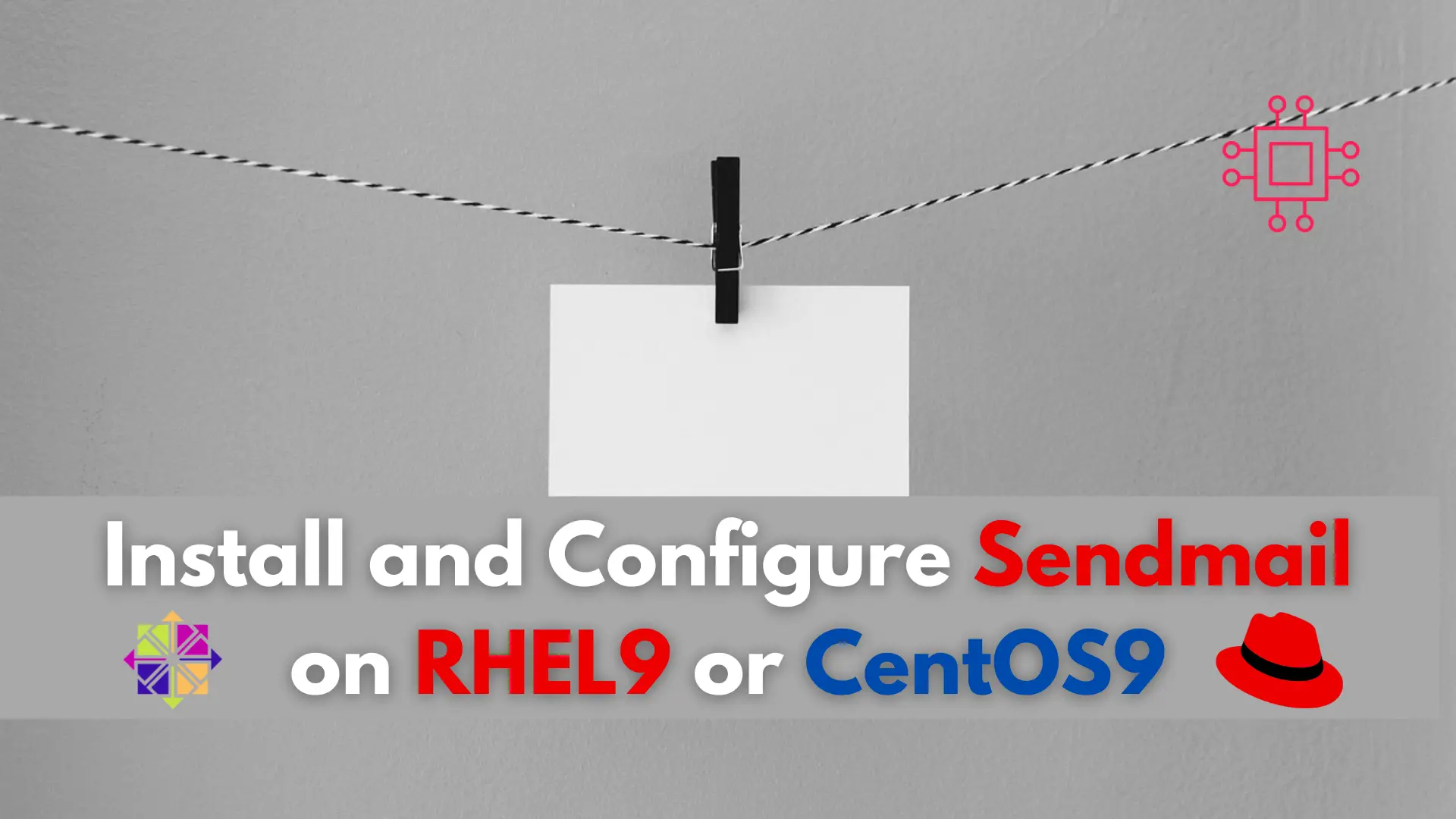
Are you looking to install and configure Sendmail on RHEL 9 or CentOS 9 but don’t know where to start? Look no further! In this

This guide will walk you through the process of configuring Sendmail as a relay server on RHEL 9 or CentOS 9, providing step-by-step instructions to ensure a smooth setup.
Setting up Sendmail as a relay server on RHEL 9 or CentOS 9 can be an essential task for organizations that need to route their emails through a central mail server. Sendmail is a powerful and flexible mail transfer agent (MTA) widely used in Unix-based systems. It is known for its robustness and scalability, making it a popular choice for enterprise environments. Configuring Sendmail as a relay server allows you to direct all outgoing emails through a designated server, improving security and manageability.
Before starting, ensure you have the following:
First, you need to install Sendmail and related packages. Open a terminal and run the following command:
sudo dnf install sendmail sendmail-cf m4
This command installs Sendmail and the configuration tools required to customize its settings.
Next, you need to edit the Sendmail configuration file to set up the relay server. The main configuration file is located at /etc/mail/sendmail.mc.
Open the file with a text editor:
sudo vim /etc/mail/sendmail.mc
Locate the following line:
dnl define(`SMART_HOST',`smtp.your.provider')dnl
Uncomment the line by removing the dnl at the beginning and replace smtp.your.provider with the address of your relay server:
define(`SMART_HOST',`relay.example.com')dnl
If your relay server requires authentication, you will need to add the following lines:
define(`RELAY_MAILER_ARGS', `TCP $h 587')
FEATURE(`authinfo', `hash -o /etc/mail/authinfo.db')dnl
Create a file named /etc/mail/authinfo to store your authentication information:
sudo nano /etc/mail/authinfo
Add the following content, replacing relay.example.com with your relay server’s address, and username and password with your actual credentials:
AuthInfo:relay.example.com "U:username" "P:password" "M:PLAIN"
Save the file and then create the database file from it:
sudo makemap hash /etc/mail/authinfo < /etc/mail/authinfo
After editing the configuration file, you need to rebuild the Sendmail configuration:
cd /etc/mail
sudo m4 sendmail.mc > sendmail.cf
This command processes the sendmail.mc file and generates the sendmail.cf file, which Sendmail uses as its main configuration file.
Now that the configuration is set, start the Sendmail service and enable it to start on boot:
sudo systemctl enable --now sendmail
Ensure the necessary ports are open in the firewall to allow Sendmail to communicate. By default, Sendmail uses port 25. To open this port, run:
sudo firewall-cmd --permanent --add-port=25/tcp
sudo firewall-cmd --reload
To verify that Sendmail is correctly set up as a relay server, send a test email:
echo "Test email from Sendmail" | sendmail -v recipient@example.com
Replace recipient@example.com with an actual email address. Check the mail logs for any errors:
sudo tail -f /var/log/maillog
#1. Restricting Relaying: To prevent unauthorized use of your relay server, you can configure access control rules in Sendmail. Edit the /etc/mail/access file to specify which domains or IP addresses are allowed to relay mail through your server.
sudo vi /etc/mail/access
Add lines for allowed and denied hosts:
Connect:192.168.1.1 RELAY
Connect:example.com RELAY
Connect:spamdomain.com REJECT
After editing the file, rebuild the access database:
sudo makemap hash /etc/mail/access < /etc/mail/access
sudo tail -f /var/log/maillog
#2. Logging and Monitoring: Sendmail provides extensive logging options. You can adjust the verbosity of the logs by editing the /etc/syslog.conf file. Increasing log verbosity can help in troubleshooting issues and monitoring email traffic. Here’s an example:
# Sendmail logging
mail.debug /var/log/sendmail.log
This configuration line does the following:
mail.debug: This specifies the logging facility (mail) and the severity level (debug). The debug level captures detailed logging information, which is the most extensive level of logging available. It includes all messages from all severity levels (emerg, alert, crit, err, warning, notice, info, and debug)./var/log/sendmail.log: This specifies the file where the log entries will be written. You can change the path if you prefer a different location for the log file.NOTE: Ensure the log file exists or create it. Also, apply the appropriate permissions and restart the rsyslog service.
firewall-cmd commands to open the necessary ports.Configuring Sendmail as a relay server on RHEL 9 | CentOS 9 involves a series of well-defined steps, from installing the necessary packages to editing configuration files and ensuring the service is running correctly. By following this guide, you should have a fully functional relay server that can handle your email routing needs securely and efficiently.
Sendmail remains a robust choice for many organizations due to its flexibility and reliability. With this setup, you’ll be able to centralize your email routing, improving your email management and security. If you encounter any issues, the Sendmail community and documentation are valuable resources for additional support.
Did you find this article useful? Your feedback is invaluable to us! Please feel free to share your thoughts in the comments section below.
Related Posts

Are you looking to install and configure Sendmail on RHEL 9 or CentOS 9 but don’t know where to start? Look no further! In this

In this tutorial, we will install Nano and review basic commands for navigating the text editor. Table of Contents Introduction For the newbie Linux user,

This detailed comparison covers key differences between Sendmail and Postfix, providing insights to help you choose the right MTA for your needs. Table of Contents
